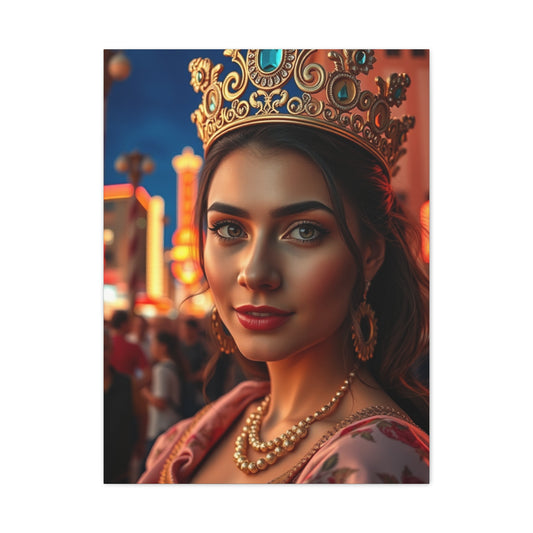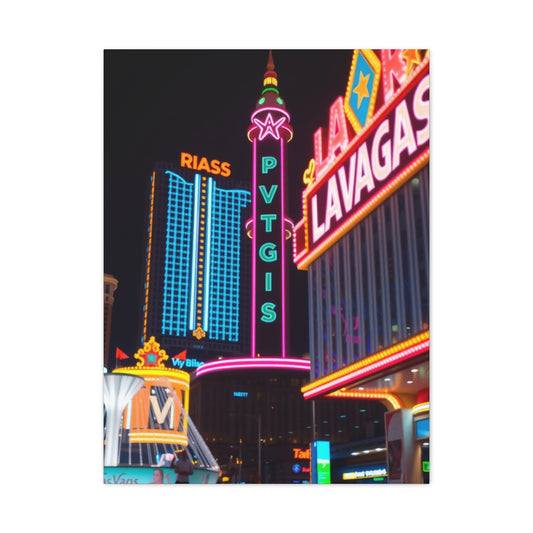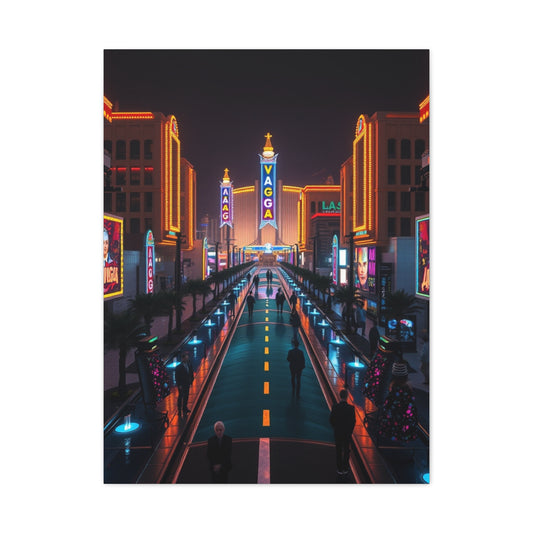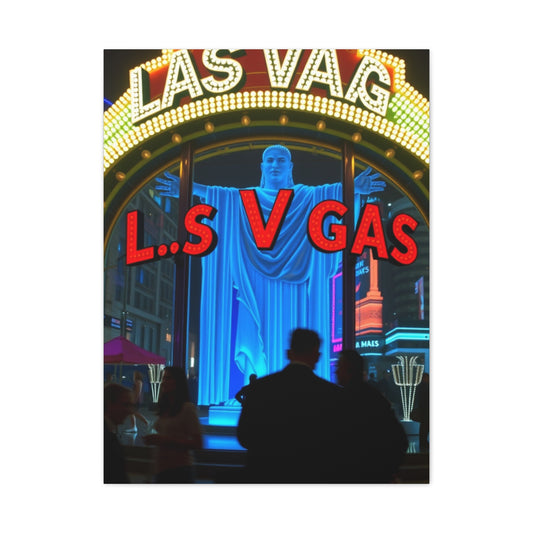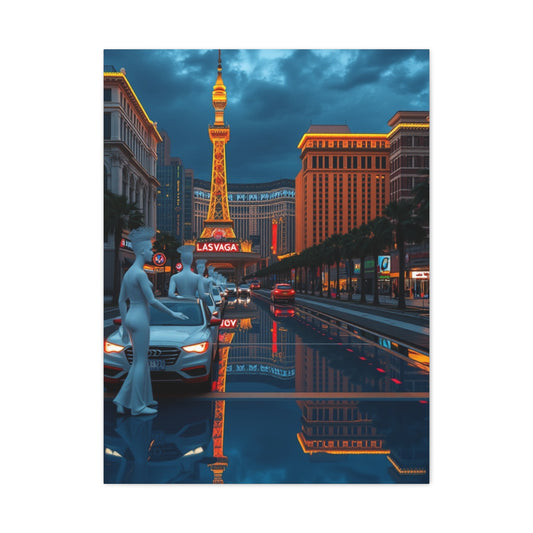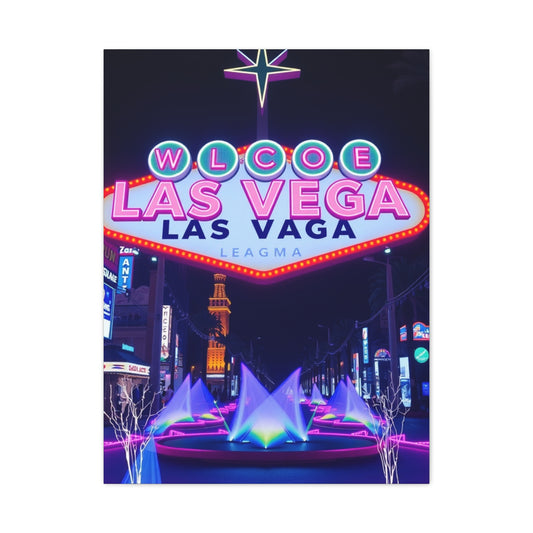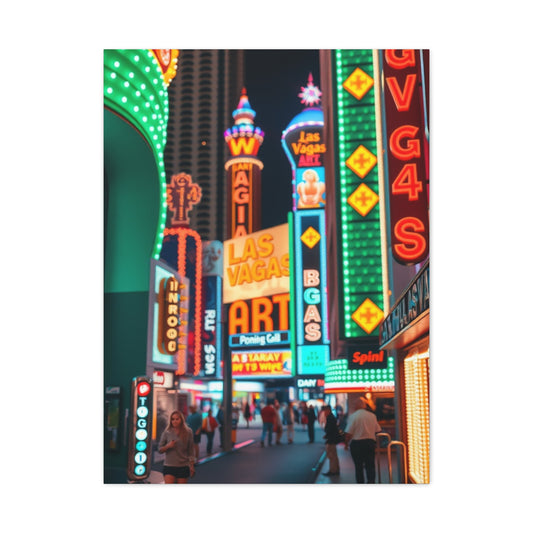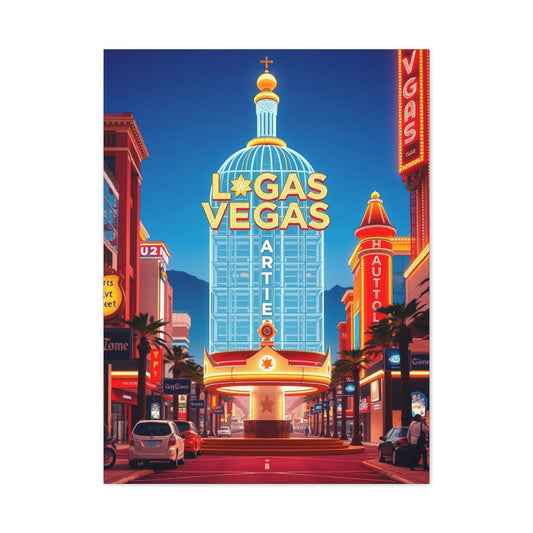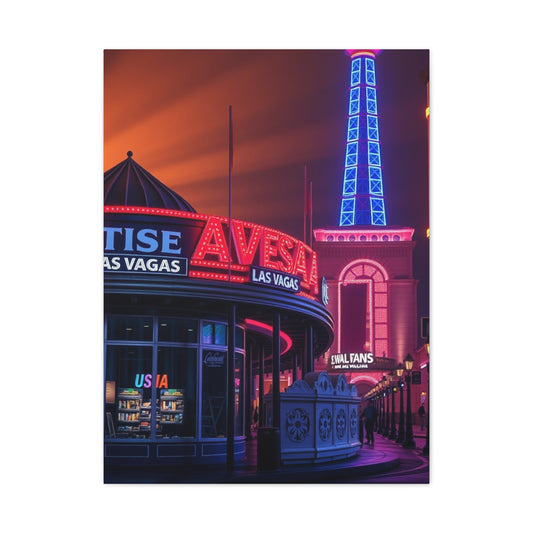A Journey Into the Heart of Las Vegas Art Experiences
Las Vegas has long been recognized as a global destination of spectacle, light, and entertainment, but beyond the flashing marquees and towering resorts lies a creative dimension that thrives with equal vibrancy. The Las Vegas art scene is not simply a supporting act to the entertainment industry—it is a cultural framework that reflects the spirit, struggles, and dreams of a diverse city. The unique combination of desert landscapes, architectural wonders, and international visitors has cultivated an atmosphere where art evolves in distinctive ways.
Walking through the Arts District, or even along ordinary streets, you encounter vast murals, community-driven installations, and galleries that give emerging and seasoned creators alike the freedom to experiment. These works capture the ethos of Las Vegas: daring, unconventional, and constantly reinventing itself. For residents, the city is both muse and canvas, while visitors discover layers of identity beyond the neon lights of the Strip.
Local curators, muralists, and educators emphasize that the city has become a proving ground for artistic innovation. The conversation around art is not limited to traditional galleries; it extends to coffee shops, libraries, universities, and even dive bars decorated with installations. This inclusivity has shaped a creative landscape that blends high culture with grassroots expression, ensuring that no single definition of Las Vegas art exists. Instead, it is a dynamic collection of narratives interwoven through murals, paintings, sculptures, performance, and experimental media.
The art scene also reflects the resilience of a relatively young city in historical terms. Unlike cities with centuries-old traditions, Las Vegas allows for reinvention, where artists can create their own pathways without the heavy weight of convention. In many ways, art here is about freedom—freedom to cross disciplines, freedom to merge influences, and freedom to transform ordinary urban corners into hubs of imagination.
Historical Background
The origins of art in Las Vegas can be traced back to the region’s indigenous peoples, who carved petroglyphs into stone formations across the Mojave Desert. These early expressions documented spirituality, survival, and connection to the land. The tradition of storytelling through imagery has remained embedded in the region’s culture, even as the city later became synonymous with entertainment.
The explosive growth of Las Vegas in the twentieth century introduced a new relationship between art and commerce. The Strip itself can be seen as one of the largest ongoing art projects in the world, with casino exteriors, neon signage, and interior designs pushing the boundaries of architecture and spectacle. The opening of iconic venues like Caesars Palace and The Mirage set a standard for immersive artistic environments that blurred the line between functional space and creative exhibition.
By the late twentieth century, local artists began to seek outlets beyond the glitz of resort design. Grassroots collectives and community galleries emerged, particularly downtown, where abandoned warehouses were transformed into studios. These initiatives laid the groundwork for what would later become the Las Vegas Arts District, often referred to simply as 18b. With events such as First Friday, the city began to develop a reputation as a center of grassroots creativity rather than just a playground for tourists.
The introduction of major cultural institutions further expanded opportunities. The Neon Museum, established to preserve iconic signs, connected historical memory with artistry. The Marjorie Barrick Museum of Art at UNLV provided a platform for both local and international exhibitions. Municipal programs, such as the City of Las Vegas Office of Cultural Affairs, began commissioning public works, ensuring that art was not hidden behind gallery walls but integrated into the everyday lives of residents.
The twenty-first century brought a surge in mural culture, particularly influenced by artists like Brian “Paco” Alvarez, Gear Duran, and Eric Vozzola, who championed large-scale urban art as both cultural commentary and beautification. Their murals across Chinatown, Downtown, and university campuses signaled a new era where Las Vegas art was no longer peripheral but central to the identity of the city.
Core Concepts and Foundations
At the heart of the Las Vegas art scene are principles that set it apart from other metropolitan centers. One defining concept is experimentation. Artists here often work across mediums, unbound by rigid traditions. A muralist may also engage in sculpture, while a digital artist may collaborate with chefs or architects to create multisensory experiences. This willingness to blur categories reflects the city’s broader culture of innovation.
Another foundation is community engagement. Unlike art scenes that can appear exclusive or elitist, the Las Vegas community fosters inclusivity. Events such as Preview Thursday and First Friday exemplify how artists, collectors, and casual visitors converge to share ideas. The accessibility of these gatherings makes art approachable to those who might not otherwise step inside a formal gallery.
Place-based inspiration also defines the scene. The Mojave Desert provides a backdrop of raw beauty, with its mountains, canyons, and unique flora. Artists frequently incorporate desert landscapes, cacti, and geological textures into their work, symbolizing both fragility and resilience. This connection between art and environment underscores a dialogue between urban expansion and natural preservation.
Equally significant is the foundation of diversity. Las Vegas attracts people from across the globe, and this multicultural environment fuels hybrid aesthetics. Latino, Asian, Indigenous, and European influences merge seamlessly within galleries and street art, producing works that are simultaneously local and global.
Institutional support forms another crucial pillar. UNLV, through its galleries and faculty, offers training and visibility for emerging talent. Libraries curate rotating exhibits, democratizing access to art in public spaces. Organizations like the Clark County Public Arts Office ensure that works are not confined to central neighborhoods but spread across the valley, from suburban parks to civic centers.
Finally, sustainability and resilience underpin much of the creative philosophy. In a city often associated with transience, local artists focus on building cultural continuity. By repurposing abandoned buildings into galleries, using recycled materials in installations, and preserving neon relics, they resist disposability and instead highlight the lasting value of artistic contribution.
Types and Categories
Las Vegas showcases a wide spectrum of artistic categories that together compose its multifaceted identity.
Mural Art
Murals dominate the cityscape, with entire facades transformed into visual narratives. Artists like Gear Duran and Eric Vozzola use vibrant palettes and symbolic imagery to tell stories of Nevada’s heritage, its people, and its landscapes. Murals in the Arts District and Chinatown serve as cultural landmarks, often attracting photographers and visitors eager to capture their essence.
Fine Art and Gallery Exhibitions
Traditional galleries continue to thrive, particularly within Art Square and the Donna Beam Fine Art Gallery at UNLV. Exhibitions range from contemporary painting and sculpture to experimental installations that challenge perception. Local artists such as Joyce Guerrero explore dark surrealism, blending inks and acrylics to examine human emotion and oceanic life, offering collectors works that are both provocative and refined.
Public and Community Art
Commissioned public projects play a central role in shaping the everyday experience of residents. Sculptures in civic spaces, installations in libraries, and curated works in museums ensure that artistic engagement extends beyond specialized audiences. Institutions like the Marjorie Barrick Museum emphasize rotating exhibits, providing fresh perspectives to regular visitors.
Indigenous and Nature-Inspired Art
The surrounding desert remains a muse for many creators. Works often integrate motifs of blooming cacti, geological formations, and desert wildlife. Artists such as Alina Lindquist use oil and gouache to depict landscapes like Grapevine Canyon, emphasizing the sacred and timeless relationship between art and environment.
Mixed Media and Digital Expression
In keeping with the city’s forward-looking ethos, digital art and mixed media practices are gaining ground. Projection mapping, interactive installations, and collaborations between technology and design reflect the city’s immersion in futuristic aesthetics. These works often appear in unexpected venues, from music festivals to culinary spaces, broadening the scope of what constitutes art.
Culinary and Experiential Art
Las Vegas also blurs boundaries between dining and creative expression. Restaurants and cafes in the Arts District, such as Esther’s Kitchen and Vesta Coffee Roasters, double as exhibition spaces. Meals themselves are crafted as artful experiences, echoing the city’s fusion of sensory indulgence with creativity.
Practical Applications
The Las Vegas art scene is not confined to passive observation; it has practical and transformative applications for both residents and visitors.
For tourists, exploring murals, galleries, and cultural hubs offers a deeper understanding of the city beyond casinos. Art tours guide visitors through the Arts District, where they can interact directly with artists, attend open studios, and purchase original works as meaningful souvenirs. This fosters cultural tourism, diversifying the city’s economy and creating lasting memories.
For locals, art serves as a mode of community building. Events like Preview Thursday provide opportunities to network, collaborate, and share narratives. Families attend First Friday not only to view art but also to enjoy music, food, and performances, reinforcing a sense of belonging in a rapidly expanding city.
In education, institutions such as UNLV integrate art into curricula that prepare students for professional careers in creative industries. Museum internships, community projects, and mentorship programs allow emerging artists to gain real-world experience.
From a therapeutic perspective, art initiatives in libraries, hospitals, and community centers highlight their role in wellness. Murals in healthcare settings promote calm and healing, while art therapy workshops empower individuals to express emotions in constructive ways.
Economically, the art scene has also spurred entrepreneurship. Independent galleries, design studios, and creative businesses contribute to job creation and urban revitalization. The transformation of the Arts District from an overlooked neighborhood into a thriving hub demonstrates how art can catalyze real estate development, attract investment, and enhance civic pride.
On a broader scale, Las Vegas art underscores the city’s global visibility. Exhibitions curated by locals often travel nationally, ensuring that the voices of Nevada artists reach audiences far beyond the state. This global circulation enhances the reputation of Las Vegas as not merely an entertainment hub but a serious contributor to contemporary cultural dialogues.
Techniques and Methods
The Las Vegas art scene thrives on versatility, where creative minds employ a wide variety of techniques and methods to communicate their ideas. Unlike cities that lean heavily on a single style or tradition, Las Vegas draws influence from global sources while embedding local character. Artists are constantly experimenting with processes that reflect both the vibrancy of urban culture and the tranquility of desert surroundings.
One of the most prevalent methods is large-scale mural painting. Murals across the Arts District and Chinatown showcase techniques ranging from traditional brushwork to spray paint and airbrushing. Artists like Gear Duran often layer intricate details with broad strokes, creating compositions that look equally compelling from a distance and up close. This attention to scale demonstrates a mastery of both perspective and proportion, as well as an understanding of how art interacts with architecture.
Digital projection and mixed media installations have also become a signature aspect of the city’s art methods. Inspired by the luminous energy of the Strip, projection mapping transforms building facades into moving canvases. These methods combine technology with visual storytelling, often accompanied by soundscapes, offering immersive experiences for audiences. Such practices represent a blending of entertainment traditions with contemporary art innovation, a distinctive trait of Las Vegas creativity.
In gallery settings, traditional media continue to flourish. Oil and acrylic painting remain foundational, but local artists frequently push these materials in experimental directions. For example, blending metallic pigments with acrylics echoes the shimmer of neon, while textured layering suggests the rugged surfaces of desert stone. Gouache and watercolor are employed to capture the fleeting hues of sunrise and sunset over the Mojave, while mixed-media collages integrate photographs, fabrics, and reclaimed materials.
Sculpture and three-dimensional work occupy a significant space as well. Metalworking, welding, and fabrication often intersect with the city’s industrial history. Many sculptors use reclaimed steel, wood, and neon tubing, merging the themes of preservation and reinvention. Outdoor installations around the Arts District are designed to withstand the desert climate, with weather-resistant finishes that protect against extreme sun and sudden storms.
Performance art is another method frequently explored. From pop-up dance routines in galleries to interactive installations in public spaces, performance integrates community participation. This method often breaks down barriers between creator and viewer, echoing Las Vegas’s reputation for spectacle while retaining intimacy.
Photography also plays a prominent role, capturing both the fleeting energy of urban nightlife and the timeless stillness of desert expanses. Many local photographers experiment with long-exposure techniques to reinterpret the glow of neon signage, while others use analog film to produce nostalgic interpretations of the city’s past.
Ceramics, textiles, and printmaking add further layers of diversity. Clay works often reference the earth tones of the desert, while textile art incorporates patterns inspired by Indigenous traditions. Printmaking studios within the city allow artists to create multiples, enabling broader accessibility of their work.
Ultimately, the strength of Las Vegas lies not in a single method but in the coexistence of many. Artists move fluidly between spray cans, digital screens, and traditional brushes, unrestrained by rigid definitions. The blending of methods mirrors the hybridity of the city itself—a place where glamour, history, and natural beauty converge.
Challenges and Common Mistakes
Despite its vibrancy, the Las Vegas art scene faces a series of challenges that artists, curators, and collectors must navigate. These obstacles are not unique to the city but are amplified by its particular environment and cultural identity.
One of the most significant challenges is sustainability. The desert climate, while visually inspiring, can be unforgiving to outdoor work. Murals fade quickly under relentless sunlight, sculptures suffer from extreme heat, and materials may deteriorate faster than in milder environments. Artists must account for these conditions by choosing weather-resistant paints and protective coatings, yet the cost of these supplies can be prohibitive.
Another challenge involves visibility. With Las Vegas globally known for its entertainment and hospitality industries, fine art often struggles to compete with the glitz of casinos and large-scale shows. Visitors may overlook local galleries, assuming the Strip represents the totality of the city’s culture. As a result, artists and curators must work diligently to highlight the authenticity of grassroots spaces, balancing marketing with creative integrity.
Funding and resources represent persistent concerns. Unlike art hubs such as New York or Los Angeles, Las Vegas has a smaller pool of collectors and patrons dedicated solely to fine art. While tourism generates immense revenue, much of it does not trickle down to independent creators. Securing grants, sponsorships, and long-term support remains a hurdle, and many artists balance multiple jobs to sustain their practices.
Gentrification poses another complex issue. The Arts District has undergone revitalization, which has brought attention and resources but also driven up rents. Studios and galleries that once provided affordable spaces are at risk of being priced out, threatening the diversity that made the area vibrant in the first place. Striking a balance between development and preservation remains an ongoing debate within the community.
Common mistakes by emerging artists often relate to underestimating the importance of networking. While technical skill is crucial, success in the Las Vegas art world also depends on building relationships with curators, collectors, and fellow artists. Ignoring opportunities such as Preview Thursday or First Friday can limit exposure. Additionally, some newcomers misjudge the balance between creating work for personal expression and adapting to community interest, leading to frustration when their art fails to connect with local audiences.
Another frequent misstep is neglecting professional presentation. In a city where spectacle is valued, poorly lit displays, weak framing, or disorganized portfolios can undermine otherwise strong work. Artists who invest time in presentation—whether through polished exhibition spaces or well-curated online platforms—often gain greater recognition.
Finally, overreliance on trends without cultivating individuality can be a pitfall. Because Las Vegas is so closely tied to entertainment, some artists mimic commercial aesthetics without fully exploring their personal voice. While this may yield short-term opportunities, it risks diluting the authenticity that ultimately sustains a lasting career. The most celebrated local artists are those who balance responsiveness to the city’s energy with a commitment to their unique perspective.
Trends and Future Outlook
The trajectory of the Las Vegas art scene reveals an exciting blend of continuity and transformation. Current trends point toward increasing collaboration, technological innovation, and deeper integration between art and daily life.
One prominent trend is the expansion of mural culture. Large-scale urban works continue to proliferate across the city, with more buildings being commissioned to host murals. This reflects a growing recognition of public art as both beautification and cultural identity. In the future, entire neighborhoods may serve as open-air galleries, offering immersive experiences for residents and tourists alike.
Another trend is the rise of interdisciplinary projects. Collaborations between chefs, musicians, designers, and visual artists are reshaping the boundaries of art. Dining experiences in particular are increasingly curated as artistic events, with restaurants and cafes hosting exhibitions, performances, and interactive installations. This convergence of sensory worlds reflects the spirit of Las Vegas as a city of total experience.
Digital and immersive technologies are also shaping the future. Projection mapping, virtual reality, and augmented reality exhibits are becoming more prevalent, especially in institutions seeking to attract younger audiences. As the global art world moves toward hybrid forms, Las Vegas is uniquely positioned to lead due to its history of spectacle-driven environments.
Sustainability will continue to guide artistic practices. With heightened awareness of environmental concerns, artists are turning to recycled materials, eco-friendly paints, and solar-powered installations. These practices resonate with the broader cultural push for environmental consciousness, while also addressing the practical realities of desert living.
The role of education will expand, with institutions like UNLV and community colleges producing a new generation of artists trained in both traditional and digital methods. More residencies and mentorship programs are expected to emerge, providing pathways for talent to remain in Las Vegas rather than relocating to larger markets.
Looking ahead, the global visibility of Las Vegas art is likely to grow. As more exhibitions travel abroad and more international artists collaborate locally, the city will strengthen its reputation as a cultural hub. The integration of Indigenous heritage, immigrant perspectives, and desert-inspired aesthetics will ensure that the art produced here maintains a distinctive voice.
Expert Insights
The perspectives of local experts provide a deeper understanding of the nuances shaping Las Vegas art. Their insights reveal not only the achievements of the present but also the hopes and concerns for the future.
Curator Brian “Paco” Alvarez emphasizes the significance of community-driven spaces. He argues that the Arts District is not simply a neighborhood but a cultural ecosystem where artists, galleries, restaurants, and visitors interact symbiotically. Alvarez also stresses that curatorial vision must balance international exposure with local authenticity, ensuring that global audiences recognize the originality of Las Vegas voices.
Muralist Eric Vozzola highlights the influence of the desert landscape. For him, the Mojave is not merely background scenery but an active presence that shapes his compositions. He notes that integrating desert motifs grounds art in a sense of place, offering audiences a deeper connection to the land. Vozzola also speaks to the importance of experimentation, encouraging younger artists to take risks and embrace fluidity in their methods.
Artist Joyce Guerrero provides insights into the challenges of identity in the city’s art scene. Having moved from San Francisco, she acknowledges the differences between established art hubs and Las Vegas. She values the accessibility of the community here, where newcomers can quickly become involved. Guerrero also underscores the importance of Preview Thursday, describing it as an invaluable opportunity to interact with collectors and curators in a less crowded environment.
Educator and artist Mary Caroline Felker reflects on the role of teaching in sustaining the city’s creative ecosystem. She argues that education not only trains future professionals but also cultivates an audience that appreciates and supports art. Felker’s focus on nature illustrates how pedagogy can merge with practice, as she inspires students to see the desert not just as an environment but as a muse.
Emerging artist Alina Lindquist speaks about the role of exploration. Her experiences painting in locations such as Grapevine Canyon reinforce the value of connecting directly with the landscape. She suggests that young artists benefit from physically immersing themselves in their environment rather than relying solely on studio work. This approach, she notes, produces a more authentic voice within the broader conversation of Las Vegas art.
Collectively, these insights portray a community that is at once ambitious and grounded. The voices of curators, muralists, painters, and educators weave together a portrait of a scene that is constantly evolving yet deeply rooted in place. Their reflections serve as guidance for future artists while also reminding audiences that art in Las Vegas is inseparable from its people, landscapes, and shared experiences.
Emerging Trends in Wall Art
Wall art in Las Vegas has become more than decoration; it is an evolving cultural language that expresses community values, personal identity, and creative innovation. The past decade has witnessed a surge in the popularity of murals, digital projections, and mixed media wall installations. These new trends reflect both global shifts in art and the unique spirit of the desert metropolis.
One notable trend is the emphasis on large-scale public murals. Once confined to gallery walls, artwork now spreads across buildings, bridges, and even alleyways, turning the city itself into a canvas. Artists are embracing bold color palettes, layered textures, and intricate symbolism to transform once-neglected areas into cultural landmarks. The Las Vegas Arts District, Chinatown, and sections of Downtown are prime examples of this transformation, where walls have become narrative surfaces telling stories of migration, heritage, and aspiration.
Another emerging direction is the fusion of technology with traditional methods. Projection mapping allows moving images to interact with static murals, bringing walls to life at night. Interactive digital installations respond to touch or movement, turning public spaces into immersive environments. This convergence of digital design and physical surface not only aligns with Las Vegas’s reputation for spectacle but also creates new opportunities for audiences to engage with art.
Environmental consciousness also shapes wall art trends. Artists are increasingly using eco-friendly paints, natural pigments, and recycled materials. Sustainability is not merely a practical choice in the desert climate but also a symbolic commitment to long-term cultural preservation. Works that incorporate reclaimed wood, metal, or fragments of neon tubing reflect both continuity and renewal.
The rise of social media has also influenced wall art. Artists design pieces with photographic impact in mind, knowing that visitors often share their experiences online. Murals with dynamic backdrops, interactive dimensions, or optical illusions become viral landmarks, drawing tourists beyond the Strip to discover local neighborhoods.
A growing movement toward storytelling through wall art can also be seen. Rather than focusing purely on aesthetics, many murals now highlight social issues, cultural history, and collective memory. From Indigenous heritage to immigrant narratives, the walls of Las Vegas echo diverse voices, offering commentary that resonates both locally and globally.
Step-by-Step Guides
Step One: Inspiration and Concept Development
The first step in creating impactful wall art is cultivating inspiration. In Las Vegas, inspiration often emerges from the surrounding desert landscapes, the multicultural identity of the city, or the neon glow of its nightlife. Artists begin by reflecting on the story they wish to tell, whether it is a personal journey, a commentary on community, or an abstract exploration of form and color. Sketches, mood boards, and written notes help refine these early ideas.
Step Two: Selecting the Wall and Securing Permissions
Finding the right wall is essential. Artists must consider visibility, texture, and scale. A smooth concrete wall offers different opportunities than a weathered brick surface. In many cases, permissions are required from building owners or municipal authorities, particularly when the wall is located in a public area. Las Vegas’s Office of Cultural Affairs and neighborhood associations often facilitate these permissions, ensuring that the artwork aligns with community guidelines.
Step Three: Preparing the Surface
Preparation is crucial for durability, especially under desert conditions. Walls are cleaned, patched, and primed to create a stable base for paint or mixed media application. Artists working outdoors often use primers that protect against extreme sun exposure and temperature fluctuations. This step may also include applying a grid or projection of the design to guide placement.
Step Four: Choosing Materials and Techniques
The choice of materials directly influences the character of wall art. Acrylics are popular for their vibrancy and resilience, while spray paints allow for rapid coverage and gradient blending. Some artists experiment with natural pigments derived from minerals, producing earthy tones that connect with the desert environment. In cases where sustainability is prioritized, recycled materials such as wood panels, metals, or plastics are integrated into the design.
Techniques vary widely, from freehand painting to stencil work and airbrushing. Many Las Vegas muralists adopt a hybrid approach, combining broad brushstrokes with detailed linework or digital projection overlays. These methods allow for both precision and spontaneity, essential in creating visually compelling works.
Step Five: Execution and Layering
Once materials and design are finalized, artists begin the execution stage. Large areas are typically blocked in with base colors before finer details are added. Layering is a common strategy, where successive coats of paint create depth and luminosity. Shadows, highlights, and textural effects enhance the three-dimensionality of the work, allowing it to stand out even in bustling environments.
Collaboration often occurs at this stage. Teams of artists may work together on different sections of a mural, ensuring efficiency and cohesion. Assistants, students, or community volunteers may also contribute, turning the process into a shared creative experience.
Step Six: Protecting and Preserving the Work
After completion, protective coatings are applied to guard against sun damage, moisture, and vandalism. Anti-graffiti varnishes allow for easier cleaning, while UV-resistant finishes extend the life of colors. Regular maintenance, sometimes organized by community groups, ensures that the mural remains a vibrant feature of the neighborhood.
Step Seven: Engagement and Reflection
The final step is engagement. Artists often host unveiling events, inviting residents and visitors to experience the work. Reflection follows, as artists assess the impact of their creation—whether it provoked thought, beautified space, or inspired dialogue. In Las Vegas, this engagement frequently extends to social media, where murals become cultural touchpoints for both locals and global audiences.
Challenges and Considerations in Wall Art Creation
Creating wall art in Las Vegas involves navigating challenges that are both technical and cultural. The desert climate is one of the most significant obstacles, with intense sunlight causing colors to fade. Artists must carefully select paints and protective coatings while balancing cost and quality.
Vandalism and graffiti overlays present another challenge. While some works are respected by the community, others become targets. Protective varnishes help, but ongoing community involvement is vital to maintaining works of art.
Financial limitations also play a role. Large murals require significant resources for paint, scaffolding, and protective finishes. Many artists rely on grants, sponsorships, or crowdfunding, which can delay projects if funding is inconsistent.
Cultural sensitivity is another consideration. Because wall art often engages with themes of identity and history, artists must approach subjects thoughtfully to avoid misrepresentation. Collaborating with local communities, especially when addressing Indigenous heritage or immigrant stories, ensures authenticity and respect.
Future Outlook of Wall Art in Las Vegas
The future of wall art in Las Vegas promises continued growth and experimentation. With increasing recognition of the Arts District as a cultural hub, more commissions are expected, offering opportunities for both local and international artists.
Integration of technology is likely to expand. Walls may soon feature interactive digital layers, accessible through mobile devices, where static murals transform into animated experiences. Augmented reality applications will allow viewers to see hidden dimensions or narratives embedded within the artwork.
Sustainability will remain a guiding principle. Artists are already exploring biodegradable materials, low-impact paints, and solar-powered lighting for installations. These practices reflect a broader cultural shift toward ecological responsibility, aligning with global art movements.
Community-driven projects will also expand. Schools, neighborhood groups, and grassroots organizations are increasingly involved in wall art initiatives, ensuring that works reflect diverse perspectives. Collaborative murals not only beautify but also strengthen social cohesion, turning creation into a form of civic engagement.
Finally, Las Vegas wall art is likely to gain greater international attention. As murals and installations are shared across social media platforms, the city is positioned as both a tourist destination and a cultural innovator. Wall art will continue to shape the global perception of Las Vegas as more than an entertainment hub, but as a city of layered creativity and resilience.
Case Studies of Notable Wall Art Projects
Several monumental wall art projects in Las Vegas illustrate how creativity has evolved into cultural storytelling. The Life is Beautiful festival murals stand out as one of the most significant endeavors. Every year, international and local muralists converge in Downtown to transform blank walls into dazzling visual narratives. These works often last beyond the festival, giving permanent character to the neighborhoods and extending the impact far beyond a single event. The vibrancy of these murals reflects the intersection between music, art, and civic pride, while also inspiring smaller grassroots projects throughout the city.
Another landmark project is the 21st Street Corridor revitalization, where once-neglected walls have been adorned with large-scale imagery of desert flora, regional wildlife, and cultural icons. These works not only beautify but also establish an emotional link between residents and their surroundings. By weaving natural motifs into the concrete jungle, artists have created visual sanctuaries that bring harmony to bustling streets.
Neon-inspired murals represent another key trend, connecting past and present. Las Vegas is historically synonymous with neon lights, and many muralists reimagine this aesthetic on walls through glowing color palettes and optical illusions. Projects on Fremont East, for instance, use fluorescent pigments that glow under ultraviolet light, bringing nighttime vibrancy to city blocks and reinforcing the city’s reputation as a place where light and art converge.
A fascinating case study lies in projects driven by Indigenous artists. Works that integrate tribal motifs, spiritual symbols, and ancestral stories highlight histories that often remain underrepresented. Murals by Native American creators in the Arts District and beyond emphasize continuity, resilience, and the sacred relationship between humans and the desert landscape. These murals not only beautify but also reinsert cultural memory into the urban fabric of Las Vegas.
Profiles of Leading Muralists in Las Vegas
The Las Vegas art scene thrives due to the contributions of both established and emerging muralists. One prominent figure is Pretty Done, known for intricate linework that covers entire walls in labyrinth-like detail. His murals often feature abstract characters and surreal imagery, drawing viewers into a world of spontaneous creativity. The hypnotic style resonates with both locals and visitors, embodying the city’s unconventional energy.
Recycled Propaganda is another name that stands out. Known for politically charged stencil work and thought-provoking compositions, his murals challenge viewers to reflect on issues ranging from consumerism to social justice. By placing provocative imagery in public spaces, he stimulates discourse in a city often associated with escapism, proving that wall art can function as social commentary.
Local artist Gig Depio contributes significantly with large figurative works that merge personal narratives with broader cultural themes. His murals often juxtapose images of workers, historical figures, and fragments of Americana, reminding audiences of the complexity hidden beneath Las Vegas’s glimmering surface. His approach highlights the power of wall art to not only adorn but also interrogate history.
Emerging muralists also enrich the scene. Younger artists experiment with digital projection, augmented reality, and biodegradable materials, blending ecological consciousness with futuristic aesthetics. Their works demonstrate that Las Vegas’s wall art is not static but evolving, pushing the boundaries of technique and medium while still respecting the heritage of the craft.
Visitor Itineraries for Exploring Wall Art
For those seeking to experience Las Vegas wall art firsthand, tailored itineraries can guide exploration. Starting in the Arts District, visitors can walk along Main Street and Charleston Boulevard, where colorful facades line cafes, shops, and creative studios. Here, murals often change, as new artists contribute fresh compositions, ensuring that even repeat visitors encounter something novel.
From there, Downtown offers an expansive open-air gallery. Murals from the Life is Beautiful festival remain scattered throughout, with themes ranging from whimsical fantasy to sharp political critique. Fremont East is particularly rich with neon-inspired pieces that glow under evening lights, creating a dreamlike atmosphere as day transitions into night.
Another route leads to Chinatown, where wall art blends Asian iconography with contemporary design. Dragons, calligraphy, and cultural symbols intertwine with pop culture references, reflecting the multicultural nature of Las Vegas. Visitors exploring restaurants and tea houses in this district can enjoy art that feels both intimate and global.
Adventurous explorers may venture to residential neighborhoods and hidden alleys, where grassroots projects thrive. Local community walls, schoolyard murals, and collaborative installations provide a glimpse into everyday creativity. These lesser-known sites reveal how art infiltrates daily life, extending beyond entertainment venues into ordinary spaces.
To enhance the journey, travelers can pair art exploration with culinary stops, local markets, and vintage shops. Experiencing wall art in Las Vegas is not only visual but also sensory, blending flavor, sound, and ambiance into a holistic cultural immersion.
Educational and Community Impact
Wall art in Las Vegas extends beyond aesthetic enrichment to play an educational and social role. Schools and youth organizations integrate mural projects into their programs, offering students opportunities to collaborate with professional artists. These initiatives nurture creativity, encourage self-expression, and cultivate civic pride. For many young people, painting a mural represents not just artistic practice but empowerment.
Community-driven projects often involve workshops where residents contribute ideas or brushstrokes. Such collaborative murals transform public spaces into shared achievements, fostering unity across cultural and generational divides. By painting together, communities strengthen social ties and gain a sense of ownership over their environment.
Educational tours organized by art institutions further amplify the impact. Guided walks introduce participants to the history, techniques, and meanings embedded within murals. These experiences deepen appreciation and expand knowledge, showing that wall art is not merely visual decoration but a cultural archive.
Economic Influence of Wall Art in Las Vegas
Beyond cultural value, wall art contributes substantially to the economy. Murals attract tourists to districts outside the Strip, directing foot traffic toward small businesses, galleries, and cafes. Visitors often stop to photograph murals, linger in neighborhoods, and spend on food, shopping, and entertainment, creating a ripple effect across the local economy.
Public art projects also increase property value. Buildings adorned with striking murals become landmarks, attracting tenants, customers, and investors. What was once an overlooked corner of the city may evolve into a vibrant hub of commerce and culture, benefiting property owners and residents alike.
For artists themselves, wall art provides income through commissions, residencies, and merchandise derived from mural imagery. Festivals, galleries, and public initiatives create paid opportunities, allowing creatives to sustain their practice while enriching the urban landscape. This economic cycle demonstrates how cultural investment produces tangible benefits for the wider community.
The Broader Role of Technology in Future Wall Art
Looking forward, technology will continue reshaping wall art in Las Vegas. Augmented reality applications allow murals to come alive through smartphones, adding hidden narratives, animations, and interactive elements. Projection mapping will expand, enabling murals to shift in appearance throughout the day or during events.
Artificial intelligence may also influence design processes, generating preliminary sketches or suggesting color palettes that artists can adapt. While creativity remains fundamentally human, these tools offer fresh perspectives and efficiency. Some muralists already collaborate with programmers and digital designers, producing hybrid works that exist in both physical and virtual spaces.
Such innovations align with Las Vegas’s character as a city of spectacle, where entertainment and technology blend seamlessly. Yet even as walls become digital interfaces, the tactile nature of paint and texture remains central, ensuring that human presence continues to ground artistic expression.
The Conclusion:
Las Vegas, once narrowly defined by casinos and neon lights, has emerged as a dynamic hub for wall art that celebrates cultural diversity, creativity, and resilience. Its walls tell stories of heritage, critique, fantasy, and aspiration, turning streets into open-air galleries where residents and visitors alike encounter unexpected beauty.
The evolution of wall art in the city illustrates a dialogue between tradition and innovation. From Indigenous motifs to projection mapping, from grassroots murals to international collaborations, the city demonstrates how art can both honor memory and anticipate the future.
More than visual appeal, wall art in Las Vegas embodies community engagement, economic vitality, and environmental consciousness. It invites dialogue, stimulates tourism, educates youth, and reinforces the city’s identity as a place where creativity thrives under the desert sun.
Ultimately, Las Vegas stands as a living canvas. Its walls do not merely display images; they breathe with the pulse of the community, reflecting its struggles, dreams, and transformations. For residents, they provide pride and connection. For visitors, they offer discovery beyond the spectacle of the Strip. For artists, they present a limitless opportunity to reimagine what walls can signify.
As wall art continues to expand in scope and ambition, Las Vegas redefines itself as not only an entertainment capital but also a city of culture, storytelling, and artistic vision. Each mural, projection, or installation adds another brushstroke to this grand portrait, ensuring that the city’s art scene will remain as dynamic and resilient as the desert landscape that surrounds it.

